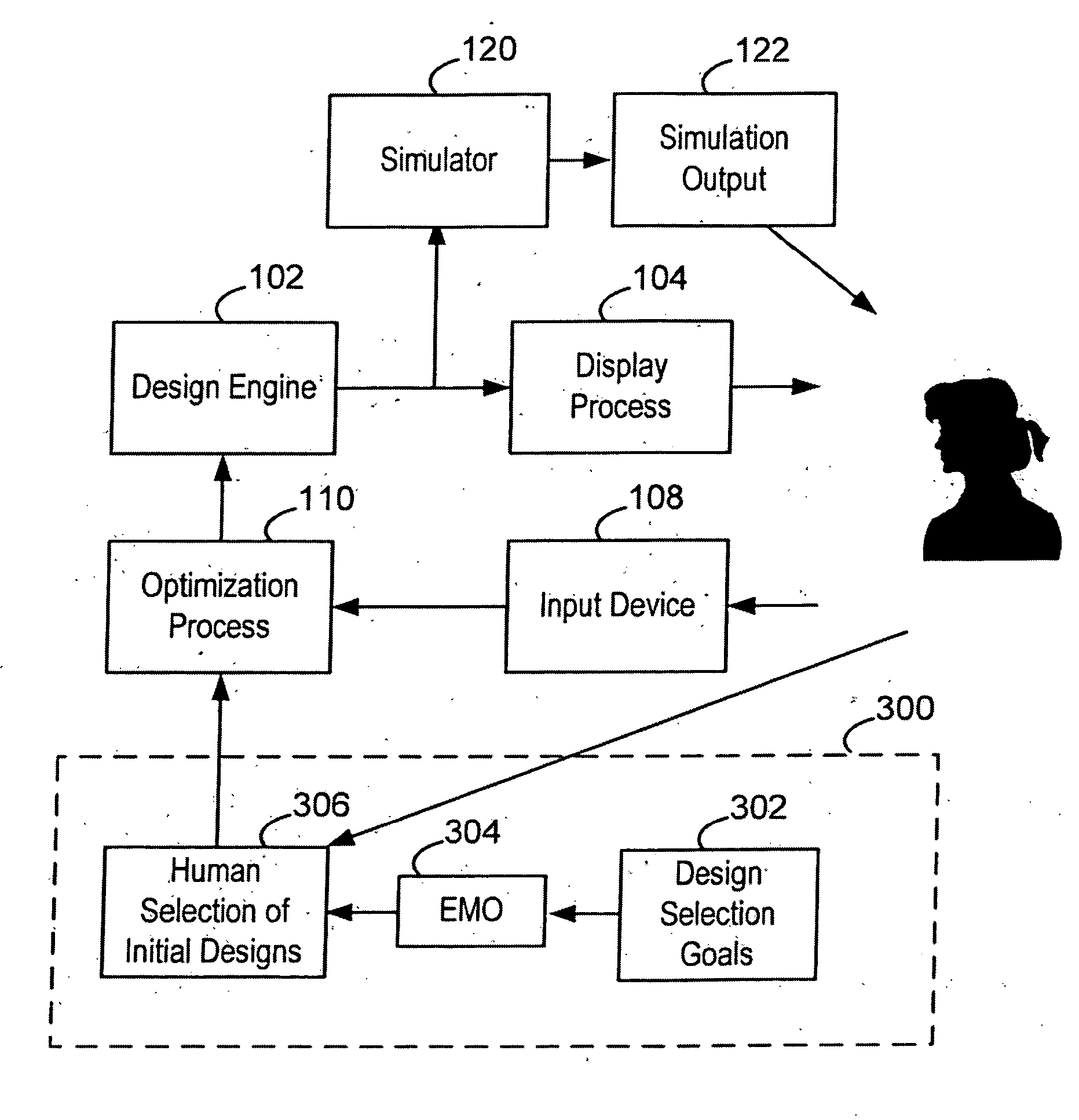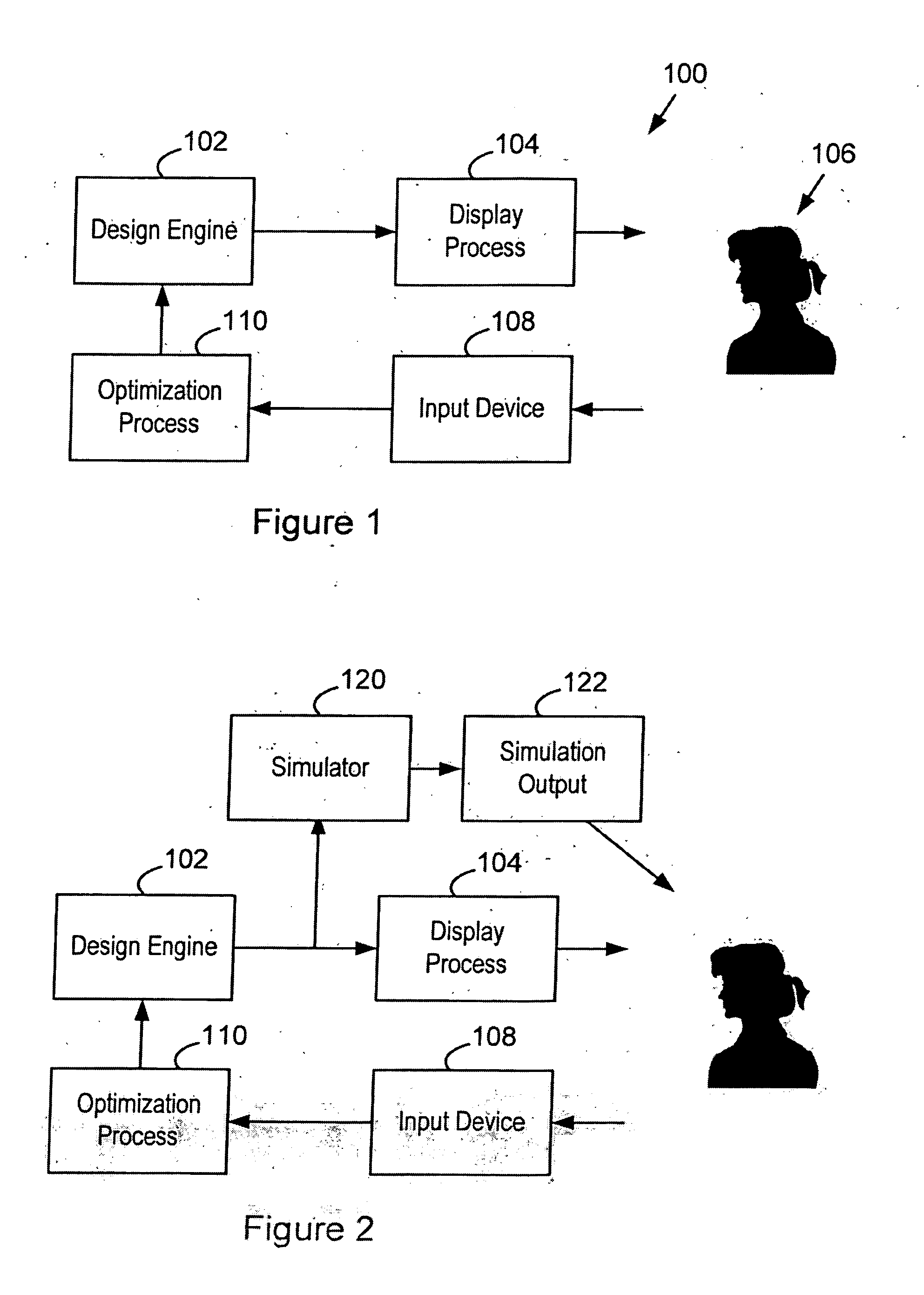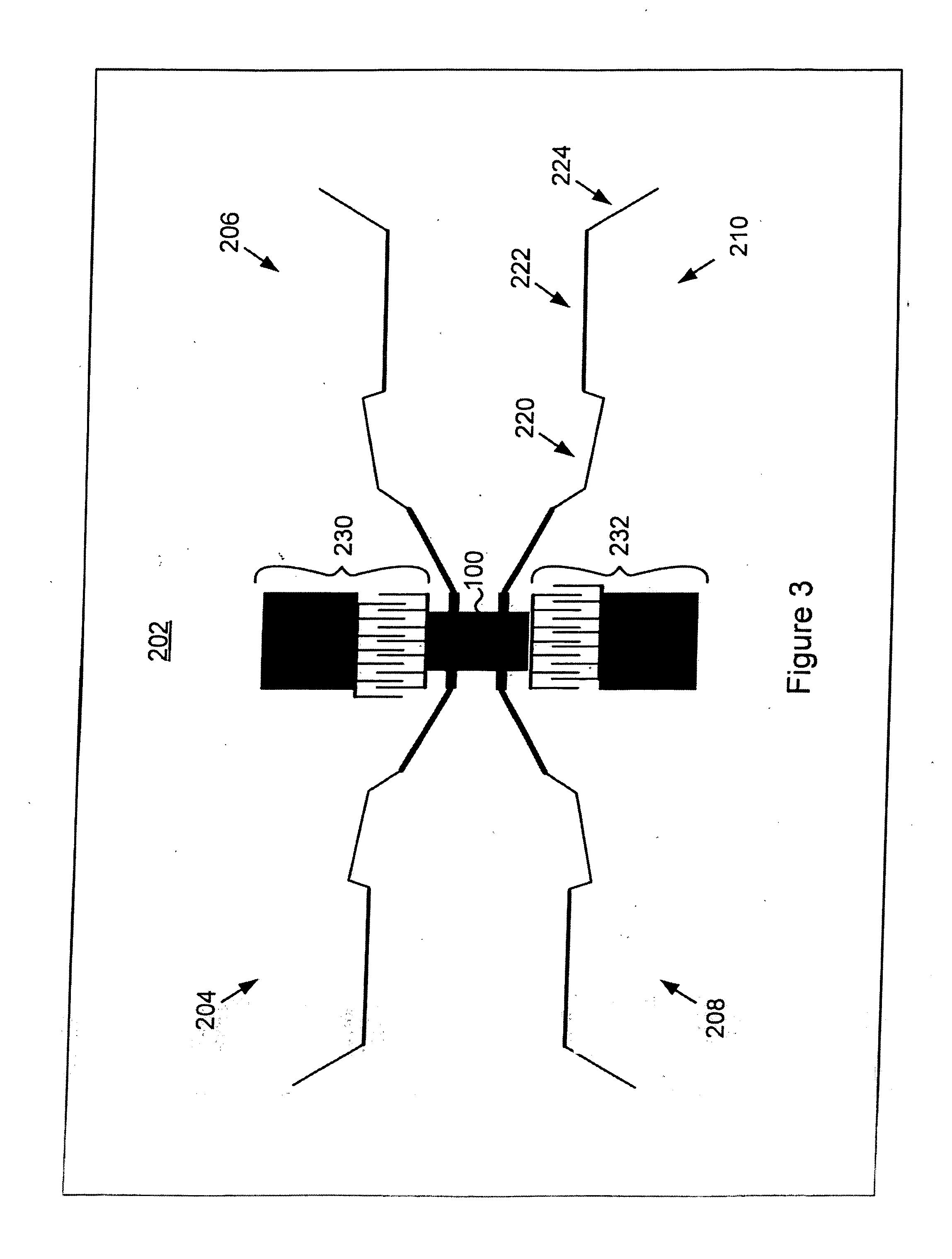Engineering design system using human interactive evaluation
a design system and interactive evaluation technology, applied in the field of engineering design systems using human interactive evaluation, can solve the problems of early design choices, too many possible design choices, and time-consuming and unpredictable design of a suitable item
- Summary
- Abstract
- Description
- Claims
- Application Information
AI Technical Summary
Benefits of technology
Problems solved by technology
Method used
Image
Examples
Embodiment Construction
[0007] A design system includes a design engine for generating designs, an evaluation process for manual human evaluation of candidate designs, and an optimization process for pruning based at least in part on the evaluation. Generation of additional designs is performed based on optimization. Newly-generated designs are then subjected to the same iterative steps. In one embodiment a simulator is also used to determine whether a design meets performance goals.
[0008] Subjective human evaluation is used for an optimization process solely or in part to obtain final designs. Human visual inspection and domain knowledge are used to evaluate and rate generated designs at different points in the evolution of a design. A preferred embodiment applies subjective evaluation to designs for devices and circuits as, for example, in the electronics, microelectronics and MEMS fields. One embodiment of the invention includes the use of evolutionary computation (EC) techniques in the optimization pr...
PUM
 Login to View More
Login to View More Abstract
Description
Claims
Application Information
 Login to View More
Login to View More - R&D
- Intellectual Property
- Life Sciences
- Materials
- Tech Scout
- Unparalleled Data Quality
- Higher Quality Content
- 60% Fewer Hallucinations
Browse by: Latest US Patents, China's latest patents, Technical Efficacy Thesaurus, Application Domain, Technology Topic, Popular Technical Reports.
© 2025 PatSnap. All rights reserved.Legal|Privacy policy|Modern Slavery Act Transparency Statement|Sitemap|About US| Contact US: help@patsnap.com



